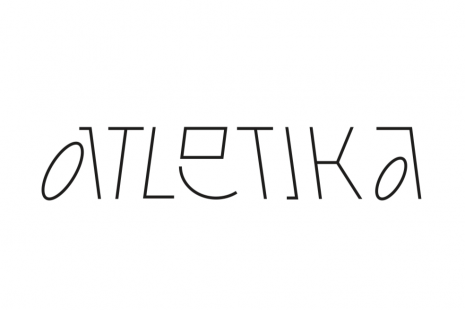Dísa’s works talk about how animals instinctively lick the earth for the salts and minerals that make up its composition. This made them travel great distances to find the perfect puddle, where the imprints in the earth became roads, and roads became civilization’s infrastructure. A stone is a cornerstone of the landscape, a starting point for a journey, and a landmark to determine where we are in relation to where we live. In the exhibition at Atletika, Dísa creates a unit of cosmic construction, which she explores in conversation with ideas of terraforming and other planets—origins of life or origins of other life. Hanna Ijäs work is traveling to a place where fantasy, imagination, and reality overlap. Hyper emotions, hyper-personalities, and hyper-realities are all possible – unprotected, unfettered by physicality. Her installation at Atletika investigates this new species that is evolving as worlds of online and offline life collide. With her work, she explores this new transitional state where emotion dominates and overcomes rationality – where human beings cease to be human in any way – where new forms of being are emerging as the lines between our online and offline lives continue to blur. Bryndís Björnsdóttir (Dísa) is an artist, writer, and researcher. Their practice is based on creating poetic connections through the interweaving of themes such as landscape, technologies, bodies, and economic power. In the last years, she has focused on alternative understandings of nature and decolonial readings of land. Hanna Ijäs is a multidisciplinary artist and performer currently based in Helsinki, Finland. In her recent work, Ijäs is trying to make sense of collective needs and desires for control, manipulation, and communication through performed games and texts. In the center of her research stands the ongoing interest in mapping out the modern human at large in the digital and physical realms. Ignas Pavliukevičius is an artist, curator, lecturer, and PhD candidate at Vilnius Academy of art. His interests lie in life mediated by technology, its impact on emotional exchange in a digital society and emotional relationship with artificial digital agents. He curated festival Umėdė (2021) and Ars Electronica Garden Vilnius in (2020), and worked as an interactive media curator at Lithuanian pavilion Lithuanian Space Agency at Venice Architecture Biennial 2021. Pavliukevičius is currently a member of the curatorial team at Atletika gallery. GPT3 is a third-generation generative pre-trained transformer, a neural network machine learning model trained on web data. It is a natural language generator the main task of which is to generate human language text.





